Carbon capture and storage
Type of resources
Topics
Keywords
Contact for the resource
Provided by
Years
Formats
Representation types
Update frequencies
Scale
-
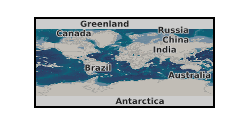
The supporting data for C. Harris et al., 2021, 'The impact of heterogeneity on the capillary trapping of CO2 in the Captain Sandstone', International Journal of Greenhouse Gas Control. We supply experimental and numerical simulation data used in the paper. The supplied codes reproduce each figure. The codes are split into 2 folders, descriptions of each of the folders are given below: 0 - README. This contains detailed instructions on using the supplied files. 1 - Main simulations. This contains the code to produce the main CMG (Computer Modelling Group) simulations outlined in the paper, with various input variable files. 2 - Other figures. This contains the code to produce other figures within the paper which do not rely on numerical simulations, including the experimental data.
-
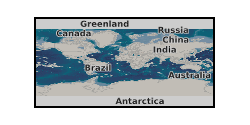
UKCCSRC Flexible Funding 2020. Experimental data are the acoustic emission (AE) signals collected with three AE sensors when CO2 leak from a CO2 storage cylinder under different pressures. '5MPa_20kgh-1' means the data was collected when the pressure was 5MPa and the leakage rate was 20 kg/h. The sampling frequency of AE signals is 3MHz. UKCCSRC Flexible Funding 2020: Monitoring of CO2 flow under CCS conditions through multi-modal sensing and machine learning.
-
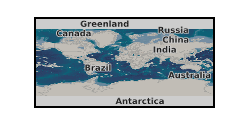
Revised full proposal cover sheet for scientific drilling (852-CPP2) 'GlaciStore: Understanding Pleistocene glaciation and basin processes and their impact on fluid migration pathways (North Sea)', submitted to Integrated Ocean Discovery Programme (IODP) April 2016. The full proposal cover sheet document is publicly available from IODP; the submitted full proposal document is restricted to the proponents for publication and for review and response from IODP. The proposal is a revision of full proposal 852-CPP in response to review by IODP. The lead submitter, on behalf to the GlaciStore consortium is Heather Stewart, British Geological Survey (BGS).The 32 proponents are from research and industry organisations in the UK, Norway, USA and Canada (BGS, Institute for Energy Technology, Lundin Norway AS, Memorial University of Newfoundland, SINTEF Energy Research, Statoil ASA, University of Bergen, University of Edinburgh, University of Oslo and University of Ottawa University of Texas at Austin). The revised full proposal cover sheet states the names of proponents of the 'GlaciStore' consortium and details for the lead submitter of the bid. The full proposal cover sheet comprises: an abstract of the submitted full proposal including description of project funding support as a Complementary Project Proposal: describes and states the scientific research objectives; summarises proposed non-standard measurements; tabulates details of the 13 proposed drill sites (revised from full proposal CPP-852) to address the scientific objectives. The objectives are to investigate: glacial history and sedimentary architecture; fluid flow and microbial processes in shallow sediments; and the stress history and geomechanical models for strata that have experienced multiple glacial and interglacial cycles. The table of revised proposed drilling sites includes designation of primary or alternate sites, the co-ordinates of the position and water depth at each proposed site, the objective for drilling and sampling and the depth to achieve the objective. The proponents, their affiliation, expertise and role for the submission are listed. UKCCSRC Grant UKCCSRC-C1-30.
-
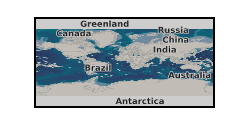
UKCCSRC Flexible Funding 2020. The experimental data was collected on a 1-inch bore gas-liquid two-phase CO2 flow rig in real time. The first column of the table is the time stamp. The second to 19th columns are the mass flowrates, temperatures, densities and tube frequencies from Coriolis flowmeters installed on the gas phase section, liquid phase section, horizontal test section and vertical test section, respectively. The last column of the datafile is the reading from the differential pressure (DP) transducer installed across the Coriolis flowmeter on the horizontal test section. UKCCSRC Flexible Funding 2020: Monitoring of CO2 flow under CCS conditions through multi-modal sensing and machine learning.
-
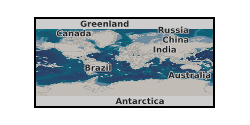
Full proposal cover sheet for scientific drilling (852-CPP) 'GlaciStore: Understanding Late Cenozoic glaciation and basin processes for the development of secure large-scale offshore CO2 storage (North Sea)', submitted to Integrated Ocean Discovery Programme (IODP) April 2014. The full proposal cover sheet document is publicly available from IODP; the submitted full proposal document is restricted to the proponents for publication and for review and response from IODP. The lead submitter, on behalf to the GlaciStore consortium is Heather Stewart, British Geological Survey (BGS).The 30 proponents are from research and industry organisations in the UK, Norway and USA (BGS, Institute for Energy Technology, Lundin Norway AS, SINTEF Energy Research, Statoil ASA, University of Bergen, University of Edinburgh, University of Oslo and University of Texas at Austin). The full proposal cover sheet states the names of proponents of the ‘GlaciStore’ consortium and contact details for the lead submitter of the bid. The full proposal cover sheet comprises: an abstract of the submitted full proposal including description of project funding support as a Complementary Project Proposal: describes and states the scientific research objectives; summarises proposed non-standard measurements; tabulates details of the 13 proposed drill sites (revised from pre-proposal stage) to address the scientific objectives. The objectives are to investigate: glacial history and sedimentary architecture; fluid flow and microbial processes in shallow sediments; and the stress history and geomechanical models for strata that have experienced multiple glacial and interglacial cycles. The table of proposed drilling sites includes the co-ordinates of the position and water depth at each proposed site, the objective for drilling and sampling and the depth to achieve the objective. The proponents, their affiliation, expertise and role for the submission are listed. UKCCSRC Grant UKCCSRC-C1-30.
-
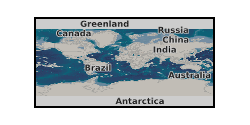
During 2010-11, as part of the Carbon Capture & Storage (CCS) Demonstration Competition process, E.ON undertook a preliminary Front End Engineering Design (FEED) study for the development of a commercial scale CCS demonstration plant at Kingsnorth in Kent, South East England. The study has yielded invaluable knowledge on areas including project design, technical design, health and safety, environment, consents and project management. The E.ON UK FEED study material is available for download.
-
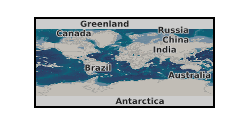
In March 2010, the Scottish CCS (Carbon Capture & Storage) Consortium began an extensive Front End, Engineering and Design (FEED) study to assess what exactly would be required from an engineering, commercial and regulatory, perspective in order to progress the CCS demonstration project at Longannet Power station in Scotland (Goldeneye) through to construction. The study has yielded invaluable knowledge in areas such as cost, design, end-to-end CCS chain operation, health and safety, environment, consent and permitting, risk management, and lessons learnt. The ScottishPower CCS Consortium FEED study material are available for download.
-
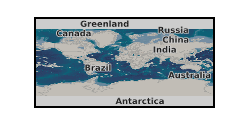
This UKCCSRC (UK Carbon Capture and Storage Research Centre) Call 1 project involved the development, testing and validation of a two-fluid transient flow model for simulating outflow following the failure of high pressure CO2 pipelines is presented. The project made use of experimental data and used experimental data available from other UK/EC funded projects. The model developed accounts for thermal and mechanical non-equilibrium effects during depressurisation by utilising simple constitutive relations describing inter-phase mass, heat and momentum transfer in terms of relaxation to equilibrium. Pipe wall/fluid heat exchange on the other hand is modelled by coupling the fluid model with a finite difference transient heat conduction model. This paper describes the model, the details of its numerical solution and its validation as well as parametric analysis of relevant parameters. http://www.sciencedirect.com/science/article/pii/S1750583614002394, DOI: 10.1016/j.ijggc.2014.08.013. UKCCSRC grant UKCCSRC-C1-07.
-
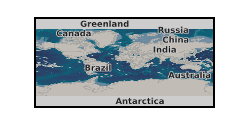
The detection and quantification of an underwater gas release are becoming increasingly important for oceanographic and industrial applications. Whilst the detection of each individual bubble injection events, with commensurate sizing from the natural frequency of the acoustic emission, has been common for decades in laboratory applications, it is impractical to do this when hundreds of bubbles are released simultaneously, as can occur with large methane seeps, or leaks from gas pipelines or undersea facilities for carbon capture and storage. This paper draws on data from two experimental studies and demonstrates the usefulness of passive acoustics to monitor gas leaks of this level. It firstly shows experimental validation tests of a recent model aimed at inverting the acoustic emissions of gas releases in a water tank. Different gas flow rates for two different nozzle types are estimated using this acoustic inversion and compared to measurements from a mass flow meter. The estimates are found to predict accurately volumes of released gas. Secondly, this paper demonstrates the use of this method at sea in the framework of the QICS project (controlled release of CO2 gas). The results in the form of gas flow rate estimates from bubbles are presented. These track, with good agreement, the injected gas and correlate within an order of magnitude with diver measurements. Data also suggest correlation with tidal effects with a decrease of 15.1 kg d-1 gas flow for every 1 m increase in tidal height (equivalent to 5.9 L/min when converted to standard ambient temperature [25 °C] and absolute pressure [100 kPa] conditions, SATP). This is a publication in QICS Special Issue - International Journal of Greenhouse Gas Control, Peter Taylor et. al. Doi:10.1016/j.ijggc.2015.02.008.
-
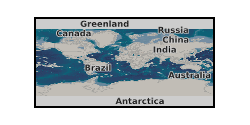
Carbon capture and storage (CCS) is a key technology to potentially mitigate global warming by reducing carbon dioxide (CO2) emissions from industrial facilities and power generation that escape into the atmosphere. To broaden the usage of geological storage as a viable climate mitigation option, it is vital to understand CO2 behaviour after its injection within a storage reservoir, including its potential migration through overlying sediments, as well as biogeochemical and ecological impacts in the event of leakage. The impacts of a CO2 release were investigated by a controlled release experiment that injected CO2 at a known flux into shallow, under-consolidated marine sediments for 37 days. Repeated high-resolution 2D seismic reflection surveying, both pre-release and syn-release, allows the detection of CO2-related anomalies, including: seismic chimneys; enhanced reflectors within the subsurface; and bubbles within the water column. In addition, reflection coefficient and seismic attenuation values calculated for each repeat survey, allow the impact of CO2 flux on sediment acoustic properties to be comparatively monitored throughout the gas release. CO2 migration is interpreted as being predominantly controlled by sediment stratigraphy in the early stages of the experiment. However, either the increasing flow rate, or the total injected volume become the dominant factors determining CO2 migration later in the experiment. This is a publication in QICS Special Issue - International Journal of Greenhouse Gas Control, Peter Taylor et. al. Doi:10.1016/j.ijggc.2015.03.005.
 BGS Data Catalogue
BGS Data Catalogue